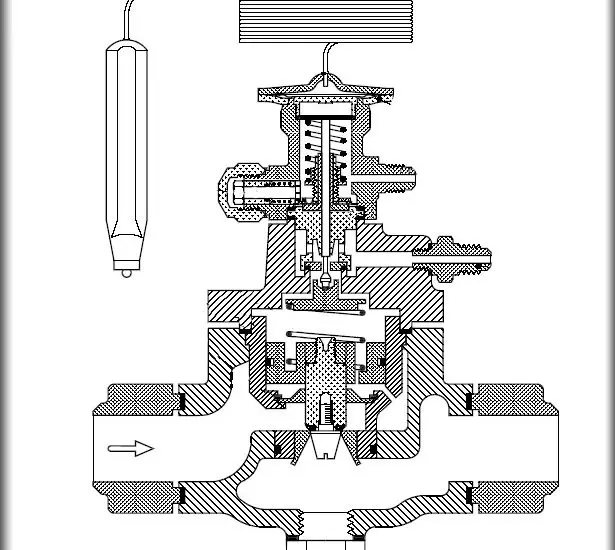If you’re wondering when to replace expansion valve in your HVAC system, you’ve come to the right place. This exhaustive guide will equip you with all the essential information to make an informed decision.

Table of Contents
When to Replace Expansion Valve
One of the most challenging aspects of maintaining an HVAC system is recognizing when a component needs to be replaced. The expansion valve is no exception.
Here’s a detailed look at some of the telltale signs that your expansion valve may require replacement.
Unusual Noises
If you hear unusual noises such as hissing or banging coming from your HVAC system, these could be indicators of a malfunctioning expansion valve. These noises may be due to the improper flow of refrigerant, which puts additional pressure on the system’s other components.
Immediate Action: Turn off the HVAC system and call a professional for diagnosis. Continuing to run the system with these sounds can cause further damage.
Insufficient Cooling or Heating
When your HVAC system fails to maintain the temperature set on the thermostat, it’s another sign of a faulty expansion valve. An underperforming valve may cause too little or too much refrigerant to enter the evaporator coil, affecting temperature control.
Immediate Action: Check other possible causes such as air filters or thermostat settings. If those are not the issues, consult a professional to inspect the expansion valve.
Frost Buildup on the Evaporator Coil
An excessive buildup of ice or frost on the evaporator coil indicates that the expansion valve is not regulating the refrigerant flow properly. The frost can obstruct airflow and reduce the system’s efficiency.
Immediate Action: Turn off the system to prevent further frost buildup and call an HVAC technician for a thorough inspection.
Recognizing these signs early and taking appropriate actions can save you from more significant issues down the line. When in doubt, it’s always best to consult a certified HVAC professional.
Why Timely Replacement is Important
Neglecting to replace a faulty expansion valve can lead to various issues, such as:
Inefficient Cooling and Heating: A malfunctioning valve can make your HVAC system work harder, resulting in poor temperature control.
Increased Utility Bills: The harder your system has to work, the more electricity it uses, leading to higher costs.
System Failure: A bad expansion valve can cause irreparable damage to other components, eventually leading to system failure.
Check out these other related articles…
Where is the AC Expansion Valve Located? Comprehensive Guide
How Expansion Valve Works in Car AC: The Complete Breakdown
Expansion Work in Thermodynamics: A Comprehensive 411 Guide
Expansion Process in Thermodynamics: Comprehensive 411 Guide
What is Thermal Expansion: A Complete 101 Guide
Steps to Replace an Expansion Valve
Replacing an expansion valve is a multi-step process that requires attention to detail. Below is a step-by-step guide:
Turn Off the HVAC System: Always start by turning off the power to your HVAC system at the circuit breaker.
Locate the Expansion Valve: It’s typically situated near the evaporator coil. Consult your HVAC system’s manual for the exact location.
Remove the Existing Expansion Valve: After locating the valve, use the appropriate tools to carefully disconnect it from the evaporator coil and the refrigerant lines.
Install the New Expansion Valve: Attach the new valve by following the manufacturer’s instructions. Make sure all connections are secure.
Check out this ACDelco Professional 15-5774 Air Conditioning Expansion Valve on Amazon if it’s compatible with your HVAC system.
Test the System: After installation, turn the power back on and run the system to ensure the new expansion valve is functioning correctly.
Consult a Professional
Replacing an expansion valve is not a task for novices. If you’re not comfortable with any of the steps outlined above, it’s highly advisable to consult a certified HVAC professional. They have the skills and equipment to safely and efficiently carry out the replacement.